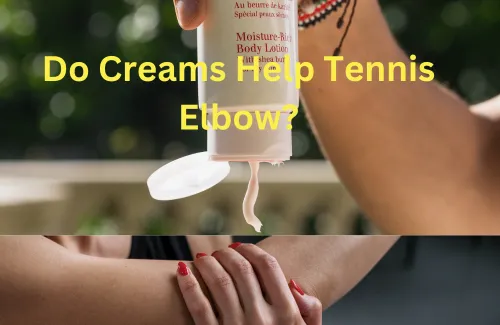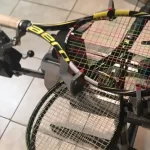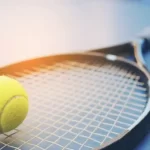Last Updated on February 14, 2024 by Robert A. Foreman
Certain creams can provide temporary relief from tennis elbow pain. They often contain ingredients that reduce inflammation and promote healing.
Dealing with tennis elbow involves managing pain and inflammation while the body heals. Over-the-counter topical creams, especially those with anti-inflammatory properties such as diclofenac, can be part of a comprehensive treatment plan. They deliver targeted medication to the affected tendon, potentially reducing discomfort and swelling.
For individuals seeking non-invasive options, these creams offer a straightforward, accessible solution. Yet, it’s essential to remember that their effectiveness can vary from person to person. Consulting with a healthcare professional can help determine if a specific cream is suitable for your condition, as part of a broader approach that might include physical therapy, rest, and exercises designed to strengthen the forearm muscles.
Table of Contents
- Understanding Tennis Elbow
- Defining Tennis Elbow: Symptoms And Causes
- Prevalence And Risk Factors Of Tennis Elbow
- Current Treatments: From Physical Therapy To Surgery
- The Role Of Creams In Managing Tennis Elbow
- Types Of Creams Used For Tennis Elbow
- How Creams Aim To Alleviate Symptoms
- Clinical Evidence: The Efficacy Of Topical Treatments
- Comparing Creams With Other Treatment Modalities
- Creams Versus Physical Therapy Exercises
- Creams In Conjunction With Bracing Or Taping
- Limitations And Potential Side Effects Of Creams
- Patient Testimonials And Expert Opinions
- Real-life Success Stories: Can Creams Be Game-changers?
- Medical Experts Weigh In: When To Consider Creams
- Guidelines For Safe And Effective Use Of Creams For Tennis Elbow
- The Verdict On Creams For Tennis Elbow
- Synthesizing Research And Anecdotal Evidence
- Making An Informed Decision: When To Try Creams
- The Future Of Tennis Elbow Treatment: Emerging Alternatives
- Frequently Asked Questions
- Should I Rub My Tennis Elbow?
- Are There Any Side Effects Of Using Creams For Tennis Elbow?
- How Often Should I Apply Creams For Tennis Elbow?
- Does Tiger Balm help with tennis elbow?
- Conclusion:
Understanding Tennis Elbow
Let’s explore what tennis elbow entails, dissect its causes, grasp its prevalence, and review the treatment spectrum.
Defining Tennis Elbow: Symptoms And Causes
Tennis elbow, or lateral epicondylitis, triggers pain around the elbow’s outside. Overuse leads to tendon strain, igniting discomfort. Recognizing symptoms early ensures swift action and recovery.
- Elbow pain that radiates to the forearm and wrist
- Difficulty in hand and wrist movements
- Grip weakness, making everyday activities challenging
Common causes include repetitive motion and overexertion. Activities like tennis, painting, or typing can contribute to its onset.
Prevalence And Risk Factors Of Tennis Elbow
Tennis elbow affects both athletes and non-athletes alike. It’s not limited to those wielding tennis rackets.
- Most common in adults aged 30 to 50
- Risk factors include occupation, sports, and hobbies involving repetitive arm use
A sedentary lifestyle and poor technique in sports can increase risks.
Current Treatments: From Physical Therapy To Surgery
Treatment options for tennis elbow span from conservative measures to surgical intervention.
- Rest and ice to reduce inflammation
- Physical therapy to strengthen muscles
- Braces or straps to offload stressed tendons
- Medication to manage pain and swelling
- Surgery, as a last resort, to repair damaged tissue
Prolonged issues may require more aggressive treatments like steroid injections or ultrasound therapy.
The Role Of Creams In Managing Tennis Elbow
Tennis elbow, a common strain injury, often comes with pain and discomfort. Can creams help? The answer lies in understanding what these creams do and how they can be part of the treatment plan for those suffering from this condition. To manage the symptoms, various creams can play a supportive role.
Types Of Creams Used For Tennis Elbow
The market offers several types of creams for this condition:
- Anti-inflammatory creams that reduce swelling.
- Analgesic creams that focus on pain relief.
- Heat creams that improve blood flow.
How Creams Aim To Alleviate Symptoms
Creams work by delivering relief right where it’s needed. They typically:
- Reduce inflammation, lessening pain.
- Block pain signals to the brain for comfort.
- Increase circulation and promote healing.
Clinical Evidence: The Efficacy Of Topical Treatments
Studies show varied results regarding creams’ effectiveness. However:
| Study Findings | Impact on Symptoms |
| Some clinical trials | Spotlight real benefits in symptom management. |
| Other research | Suggests limited effects when used alone. |
Evidence suggests creams are best used as part of a comprehensive treatment strategy. Always consult healthcare professionals before starting any new treatment.
Comparing Creams With Other Treatment Modalities
Tennis elbow, a form of tendonitis, often leads to the search for effective treatments. Creams promise quick relief, but how do they stack up against other methods? Exploring various treatment options clarifies their benefits and limitations. Let’s dive into how creams compare with exercises, bracing, and potential side effects.
Creams Versus Physical Therapy Exercises
Physical therapy aims to strengthen the muscles and improve flexibility. Exercises target the affected area, promoting healing over time. Creams may offer immediate pain relief but do not address the underlying condition.
- Physical therapy exercises improve tendon strength.
- Creams mainly serve to reduce pain and inflammation.
- Consistency in therapy exercises offers long-term benefits.
Creams In Conjunction With Bracing Or Taping
Braces and taping stabilize the elbow, preventing further strain. Creams can complement these methods by easing discomfort. Together, they can enhance the healing process.
| Treatment | Primary Benefit | Usage |
| Bracing | Stabilization | During activities |
| Taping | Support | As needed |
| Creams | Pain relief | Multiple times daily |
Limitations And Potential Side Effects Of Creams
While creams offer quick pain relief, they do have drawbacks. Limited treatment effects and side effects must be considered. Creams should not be the sole treatment option.
- Short-term pain relief does not heal the injury.
- Possible skin irritation or allergic reactions.
- Overuse can lead to decreased effectiveness.
Patient Testimonials And Expert Opinions
When dealing with tennis elbow, real stories and expert advice matter. Many turn to creams for relief. But, are these topical solutions truly effective?
Real-life Success Stories: Can Creams Be Game-changers?
Countless patients have shared remarkable journeys to recovery, crediting creams as part of their healing regimen. Here are a few standout narratives:
- John, a weekend warrior, found that a specific anti-inflammatory cream reduced his elbow pain significantly.
- Emily, a graphic designer, reported less stiffness after using a cream recommended by her physiotherapist.
- Tom, a retired tennis coach, was skeptical at first but admits that a pain-relieving cream played a role in his improved mobility.
These stories show that creams can indeed be pivotal in managing symptoms.
Medical Experts Weigh In: When To Consider Creams
What do doctors say? Creams can have a place in treatment plans. However, they should not replace professional medical advice. Medical experts suggest:
- Using creams as a complement to exercises and stretches.
- Consider creams when immediate pain relief is needed.
- Applying creams to assist with sleep when nighttime pain is problematic.
Remember, these products support, not substitute, other therapeutic options.
Guidelines For Safe And Effective Use Of Creams For Tennis Elbow
Safe application is crucial. Adhere to these guidelines to avoid any issues:
| Tip | Explanation |
| Read Labels | Understand ingredients to prevent allergic reactions. |
| Follow Directions | Use the right amount and apply as instructed. |
| Spot Test | Apply a small amount to test skin sensitivity. |
| Consult Experts | Speak with a doctor before starting any new treatment. |
Consistent usage according to these guidelines often yields the best results. Be patient and give the cream time to work.
The Verdict On Creams For Tennis Elbow
Tennis elbow, a frustrating condition for many athletes and non-athletes alike, often leads to the question: do creams help? With various treatments available, it’s crucial to understand the effectiveness of topical solutions.
Synthesizing Research And Anecdotal Evidence
A deep dive into both clinical studies and personal stories is vital to gauge the real impact of creams on tennis elbow. While scientific research offers mixed results, individual experiences can reveal patterns of success or failure.
- Studies show some creams reduce inflammation and pain.
- User testimonials often highlight short-term relief.
- Effectiveness varies based on cream ingredients and individual conditions.
Making An Informed Decision: When To Try Creams
For those considering creams, it’s vital to weigh the pros and cons. Consider cream application if:
- You seek non-invasive treatment.
- You want immediate, though temporary, relief.
- You’re combining creams with other treatment strategies.
Always consult with a healthcare provider to tailor treatment to your specific needs.
The Future Of Tennis Elbow Treatment: Emerging Alternatives
The ongoing evolution of tennis elbow treatment promises new alternatives that might outshine current cream options. Progress in medical research often leads to novel solutions.
- Biologic therapies: using the body’s natural healing mechanisms.
- Advanced physiotherapy: targeting muscle and tendon repair.
- New drug formulations: potentially more effective topical options.
Frequently Asked Questions
Should I Rub My Tennis Elbow?
Gently massaging your tennis elbow can aid in pain relief and increase blood flow. Avoid vigorous rubbing as it may aggravate the condition. Consult a physiotherapist for proper techniques and treatment.
Are There Any Side Effects Of Using Creams For Tennis Elbow?
Most topical creams for Tennis Elbow have minimal side effects, but it’s important to read the instructions or consult with a healthcare professional before use. In rare cases, some individuals may experience skin irritation or an allergic reaction to certain ingredients.
How Often Should I Apply Creams For Tennis Elbow?
Generally, it is advisable to apply the cream 2-3 times a day or as directed by a healthcare professional.
Does Tiger Balm help with tennis elbow?
Yes, Tiger Balm is also helpful in reducing the pain and inflammatory effect for now. It works well like creams and lotions you apply on the elbow to lower the pain and increase its functionality.
Conclusion:
Summing up, creams can provide relief for tennis elbow sufferers. They’re a non-invasive option that targets inflammation and pain directly. Consistency and correct application are key. While not a cure-all, when combined with proper rest and exercises, these topical solutions are valuable allies in your recovery journey.
Remember to consult with a healthcare professional for a tailored treatment plan.

Hello, I am Robert A. Foreman founder and chief writer at Indorgames. I have had experience in Tennis for a long time since 2016. I know the exact problems that a beginner faces and know the solutions too. I have shared all my knowledge about Tennis on my website. Feel free to read them and learn more important things and facts about Tennis. follow me Twitter







